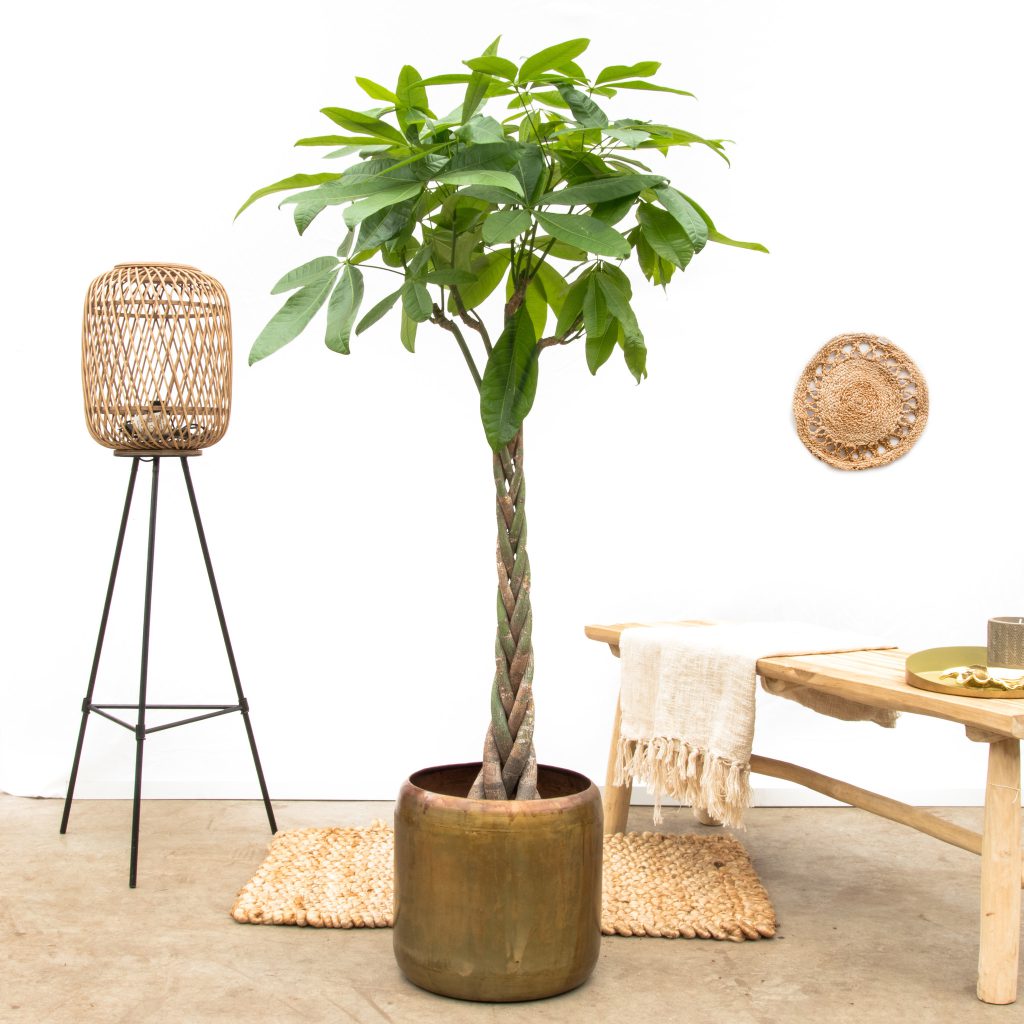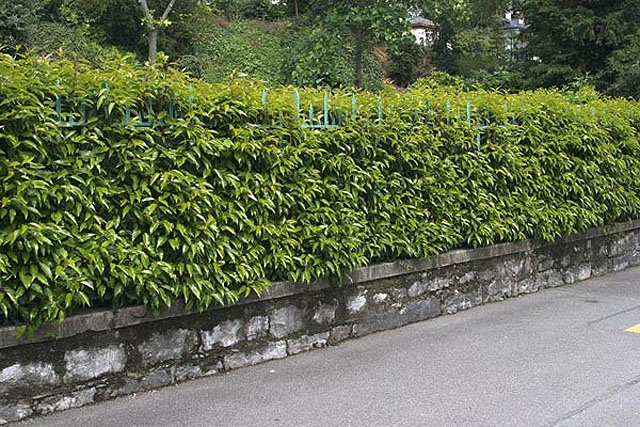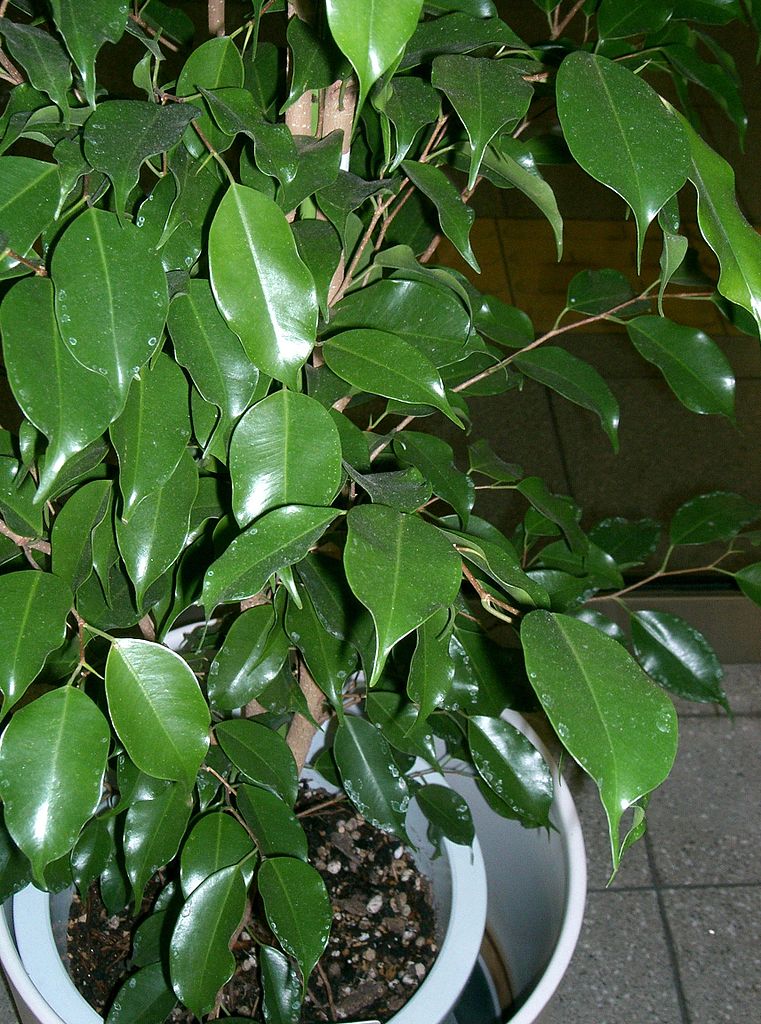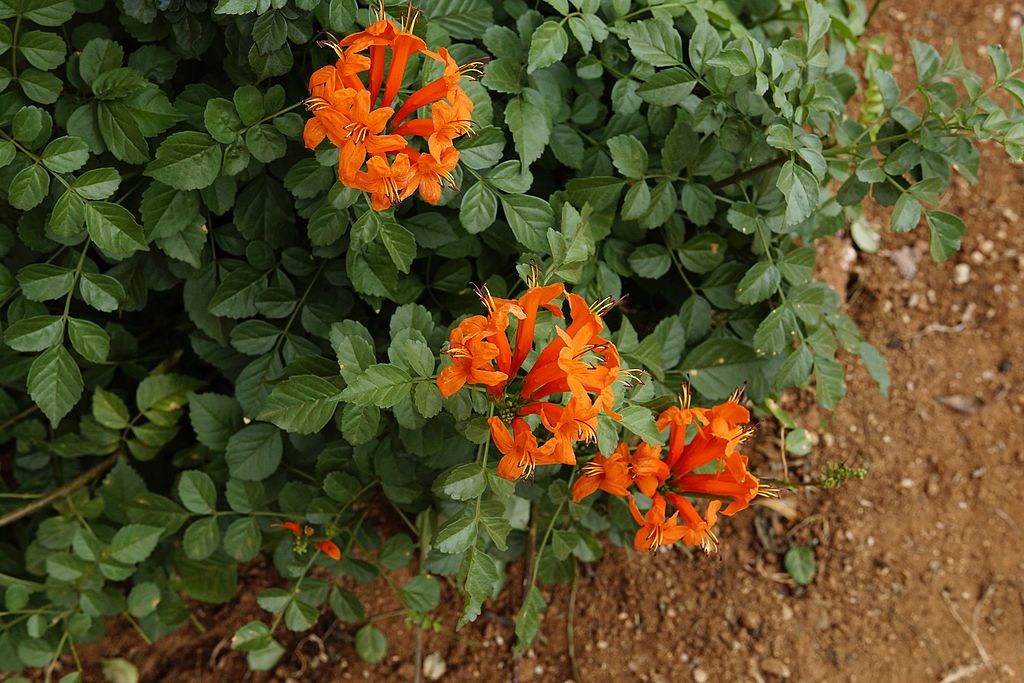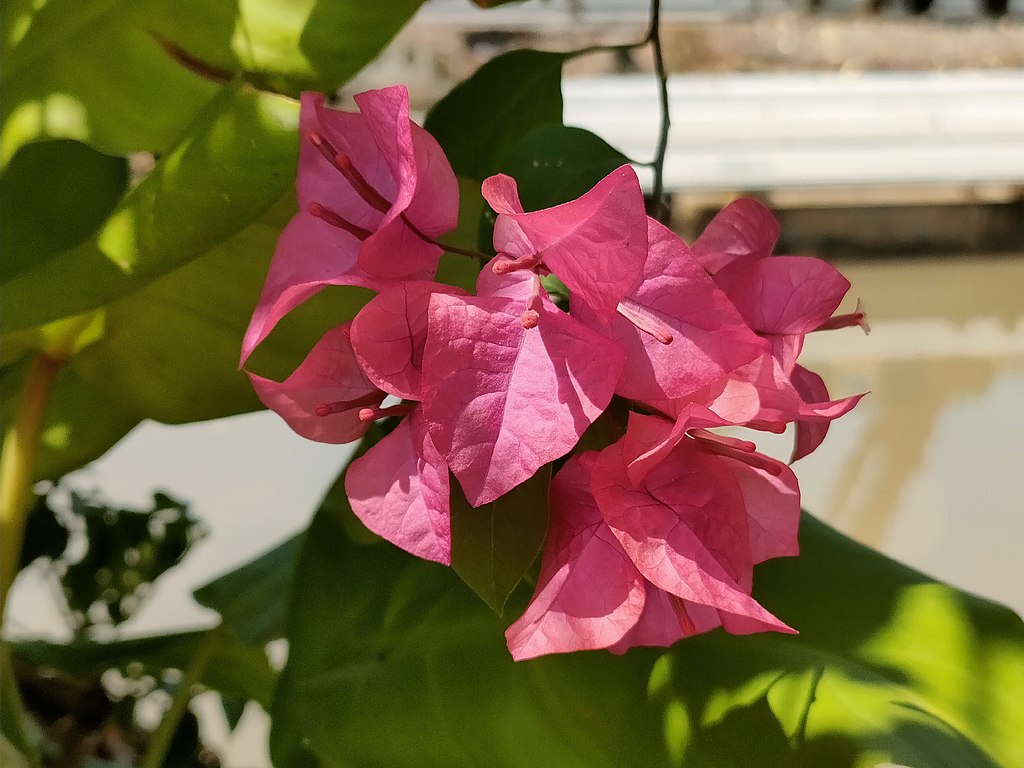The money tree, Pachira aquatica, is a popular houseplant that has attractive umbrella-like leaves and a relaxed character. It is often sold with a braided trunk.
The braided trunk isn’t a natural feature – in plant nurseries, the supple young stems of young plants are braided together before they turn woody.
Pachira aquatica goes by many names – water chestnut, guinea nut, Guiana chestnut, provision tree, French peanut, Malabar chestnut, Mexican fortune tree, dollar plant and saba nut.
According to the Chinese art of feng shui, a properly placed money tree is considered to bring prosperity – good fortune is said to be trapped within the trunk and the five-lobed leaves are also considered lucky. Money trees are therefore often given as wedding or housewarming gifts.
It’s a tropical evergreen tree, part of the Malvaceae family, native to Central and South America, where it can reach 20 meters tall and produces edible nuts. As an indoor plant, can reach 2 meters tall.
The Money tree naturally grows in freshwater swamps and river banks in tropical rainforests in Central America. Knowing the natural habitat of the plant helps us understand how much light a Money tree needs. Despite its damp native habitat, it doesn’t need a huge amount of watering – it can store water at the base of its swollen stems.
Planting indoors Pachira aquatica (money tree)
Place your tree in good soil mix. The money tree doesn’t need much soil, its root system is very shallow and small.
However, since it grows quite tall, make sure the pot is heavy enough so it won’t tip over.
The Money tree grows best in rich, loamy soil that is well-draining. You can use most general houseplant potting soils, as these usually contain plenty of nutrients and drain quite well. You can also make your own soil mix by combining one part potting soil, one part peat moss, and one part perlite. This mixture lets oxygen through quite well, holds onto moisture, but also drains excess moisture quite quickly. This allows your Money tree to soak up all the moisture it needs, with a low chance of getting root rot.
It is recommended to place clay pebbles at the bottom of the pot to facilitate drainage and avoid having the roots wallow in water.
Also, keep a small hand mister with soft water nearby. Squirt the plant often to give it the moisture it craves.
Planting outdoors Pachira aquatica (money tree)
Pachira is a tropical plant, so it will only grow in specific climate parameters. Crucial is to have both warmth and moisture.
Light – where to place a Pachira aquatica (money tree)
Money trees prefer bright, indirect light but can also tolerate low-light conditions. If you are growing your Money tree indoors, place it near a window where it will receive plenty of natural light.
However, make sure your money tree isn’t getting too much direct sunlight. Too much direct light can cause the leaves to bleach and too little sunlight makes the plant become leggy. When a plant becomes “leggy” that means it has really long, stretched, stems, with just a few leaves on the top.
Watering – How often should I water my Pachira aquatica (money tree)?
As it is a tropical plant, the Money tree enjoys slightly moist soil. You can keep your Money tree happy by watering the plant when the top 3 centimeters of soil feels dry to the touch. Depending on the size of your plant and the pot it’s in, this may be once a week or once every two weeks.
Water slowly and deeply, until water starts to come out of the drainage holes at the bottom of the pot. Allow the plant to drain for a few minutes until the excess moisture has drained from the pot. Be sure to not overwater your plant as this can cause root rot.
The Pachira aquatica (money tree) loves moist soil but doesn’t like to grow in standing water. It stores a lot of moisture in its stems, so it prefers to soak up the moisture from the moist soil and let the soil dry out before you water it again.
Money tree requires about 50-60% humidity. You can provide this by using a humidifier or as with other tropical plants, placing the plant’s pot on a tray filled with pebbles and water.
If leaf tips start turning brown, it means the air around the plant is too dry.
Leaf drop can be caused by overwatering (or more rarely, underwatering).
Yellowing or wilting leaves could be caused by overwatering.
Fertilizing a Pachira aquatica (money tree)
It is recommended to fertilize your Money tree every two to three weeks during the growing season (spring and summer).
You can use a standard houseplant fertilizer or a slow-release fertilizer. Be sure to follow the instructions on the fertilizer package for how much to use.
During the fall and winter, you shouldn’t fertilize your Pachira aquatica at all, as it won’t need the extra energy to grow. During the fall and winter, the Money Tree will slow down its growth until the spring.
During this time, you shouldn’t fertilize your plant, as this could lead to overfertilizing. Overfertilizing can burn the roots of your plant, which will slowly kill the plant.
Pruning Pachira aquatica (money tree)
No pruning is formally required.
However, you can prune in spring above an eye to encourage growth of new shoots.
Pachira aquatica (money tree) flowers
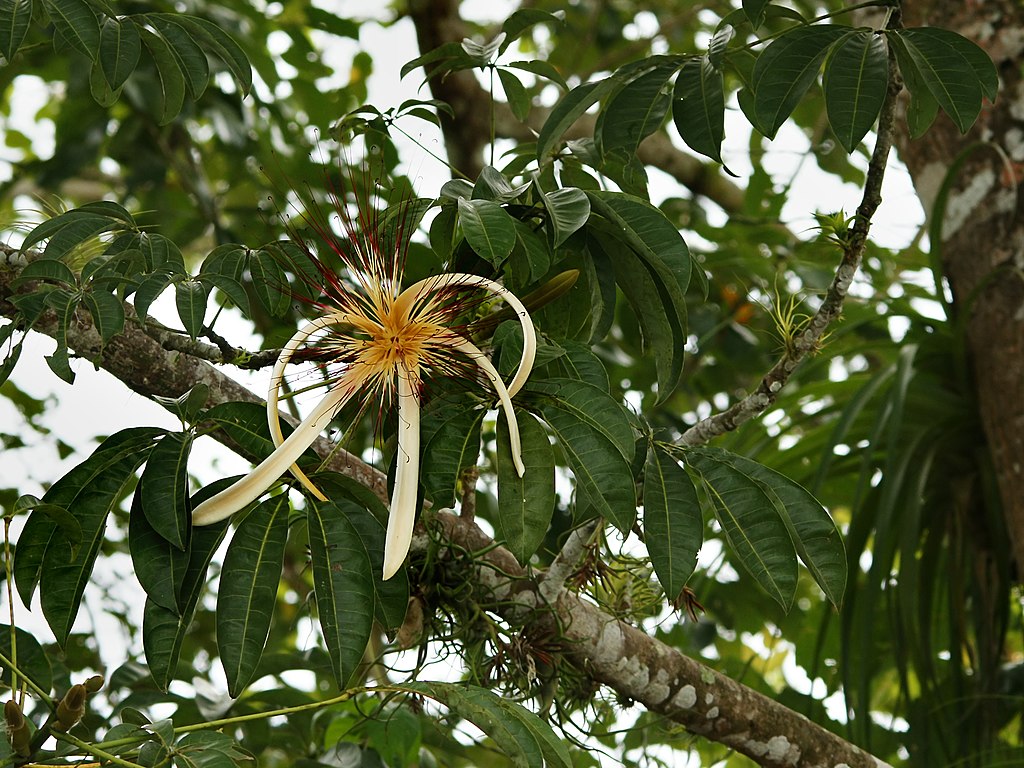
Outdoor money trees produce distinctively showy flowers and fruit. The flowers are yellowish-white, with petals that curl severely back to fully reveal thick clusters of 3- to 4-inch-long, red-tipped stamens. The flowers are replaced by football-shaped seed pods that can reach 12 inches in length and are filled with edible nuts that taste somewhat like peanuts.
Like all flowering plants, money trees need proper care to bloom, but it’s not light, or a lack of light, that causes these indoor plants to fail to bloom. Outdoors, they produce flowers quite readily if their basic needs are met – and if they are pollinated. In the wild, bats pollinate money trees at night. Because this is unlikely to happen indoors, potted money tree plants grown as houseplants usually don’t produce flowers.
Money trees when grown indoors, they generally don’t flower because they are not easily pollinated. In the wild or when grown outdoors, they are pollinated by bats.
Greek name: Παχίρα.
Sources: https://www.gardenersworld.com/how-to/grow-plants/how-to-grow-a-money-tree-pachira-aquatica/, https://plantcareforbeginners.com/articles/how-to-take-care-of-a-money-tree-pachira-aquatica, https://www.nature-and-garden.com/gardening/pachira.html, https://homeguides.sfgate.com/much-light-make-money-tree-flower-96188.html, https://www.valentine.gr/pachira_gr.php
Tags: ORNAMENTAL PLANTS

